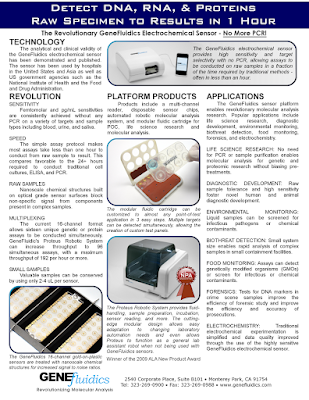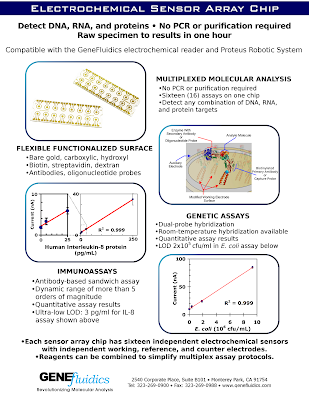A potentiostat is the electronic hardware
required to control a three electrode cell and is used to run most
electroanalytical experiments. In electroanalytical experiments, it is often
used to read the signal from sensor chips with an analyte.
This equipment is
fundamental to modern electrochemical studies using voltammetry for
investigations of reaction mechanisms related to redox chemistry and other
chemical phenomena.
Helios
Multi-Channel Potentiostat
Helios
is the first truly affordable multi-channel electrochemical workstation that
has 16 independent channels, all with independently addressable control. Its
channel configuration is easy to use and efficient – capable of performing up
to 16 different electrochemical experiments at the same time.
The
Helios, as well as our electrochemical sensor chips, is a great representation
of our novel sensor technology that is unlike the conventional electrochemical sensor
chip and potentiostat combination. Using our universal technology platform, experiments
such as electrolyte assays, genetic assays, and immunoassays are able to be
performed using raw samples - no PCR required; yielding precise, quantitative
results in under an hour.
By
adapting the advanced USB connection, Helios is sleek and compact in design
like no other of its kind; providing you with the utmost performance – through the
use of just one cable.
Helios Applications – Electroanalysis
Electrochemical
research is a broad research field and directly contributes to a wide variety
of applications in the medical field. GeneFluidics’ Helios currently focuses and
contributes in the fields of pathogen identification, antimicrobial
susceptibility testing (AST), and cancer biomarker screening.
In all fields of diagnostics,
accuracy, reliability, and speed are very essential factors. In answer to that,
GeneFluidics develops highly sensitive and efficient detection platforms and
point-of-care research systems to deliver prompt, precise results for research
in medicine and other life sciences. GeneFluidics is working to develop and
optimize products that will be more reliable and easy-to-use in hospital and
clinical settings. Pursuant to that goal, we have been in close collaboration
with physicians in urology, pediatric pathology, and oral oncology.
As a case in
point, typical microbial analysis of bacterial infections relies on a culturing
process requiring one to three days before results are available. This often
forces clinicians to prescribe antibiotics before test results are available. Driven
by this heedless prescription of antibiotics, emergence of drug-resistant
pathogens has been a growing threat to global health.
With the
GeneFluidics’ detection technology, rapid antimicrobial susceptibility testing
(AST) is possible. We are capable of cutting the required days it takes to
provide susceptibility data to a matter of just hours. This revolutionary
platform could enable clinicians to treat patients based on accurate pathogen
identification and resistance information without promoting the growth of
drug-resistant pathogens.








